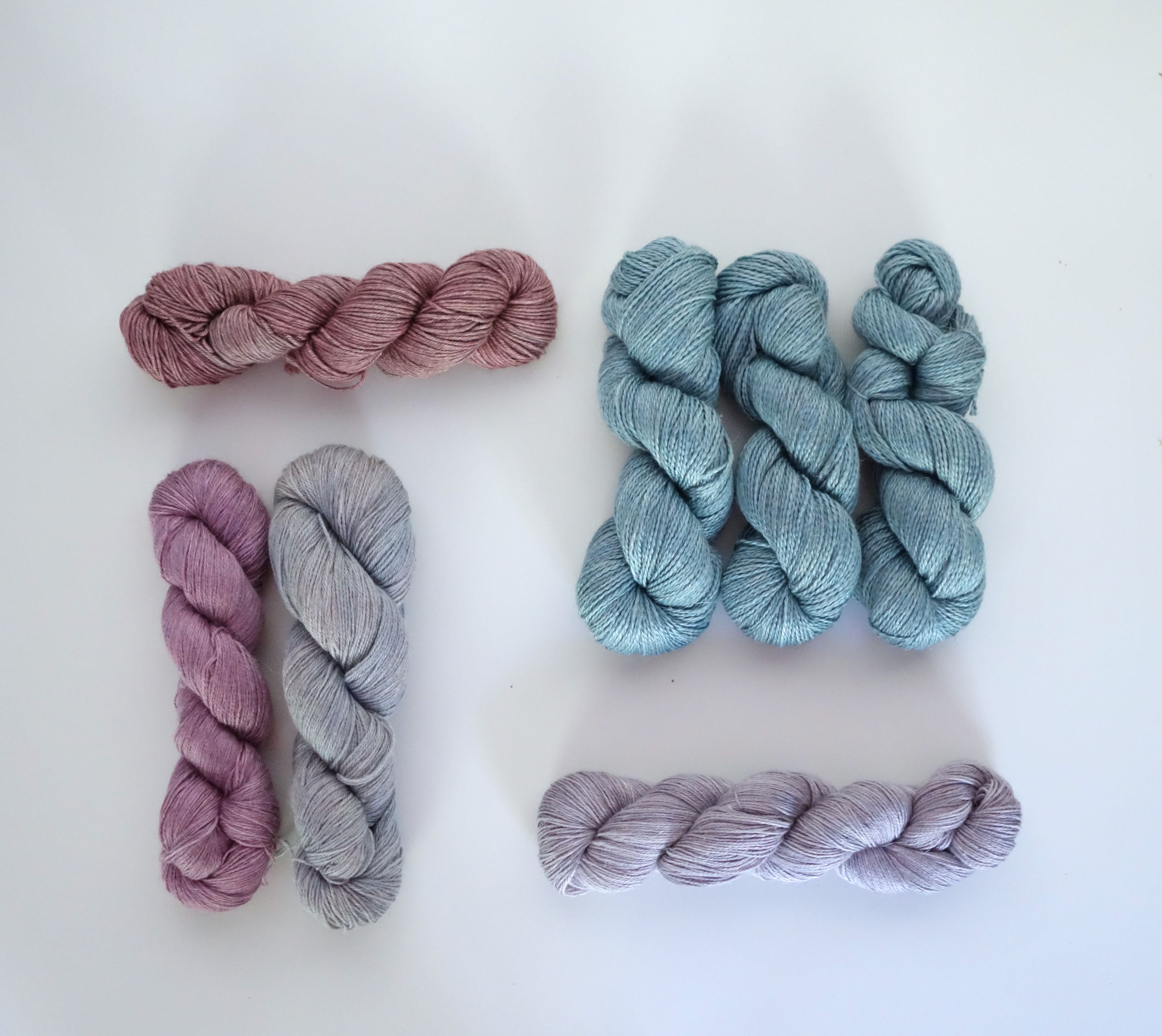Natural dyeing
Natural dyes

Natural dyes are my way to give color to the yarn bases I’m working with. There’s always an element of surprise! Depending on the mordant you use, the water, and the temperature, the same dye can result in different colors. Here’s an overview of which plants normally yield which colors:
Yellow & Green

Birch leaves are one of the wonders of natural dyeing land. You wouldn't think it, but these bright green leaves produce a range of beautiful sunshine-y yellows.
Chamomile is another flower you can harvest from your garden or balcony and start dyeing with it. It yields a range of gorgeous pale yellow.
Dahlia is a flower that you can easy grow in your garden, there are different flower color. Dyeing with dahlia you can get yellow and orange.
Eucalyptus yes, the small silvery green leaves you can buy at your local florist - is an absolute surprise when dyeing with it. It produces a vibrant, yellow, tan, orange and browns- who would've thought??
Marigolds provide a stunning yellow-orange - very similar to the flower itself! We use both dried and fresh marigolds in our dyeing process - sometimes we can even find them in our backyard.
Onion skins yield a range of beautiful earthy tones. Yellow onion skins produce yellows and oranges while the colors achieved with red skins range from blush pink to red-brown.
Pink, Purple, Blue & Red

Alkanet comes from the root of plants belonging to the borage family (a herb!). It can produce greys, lavenders and even purples!
Avocado pits produce the most exquisite, gorgeous, blush pink dye you've ever seen.
Cochineal made with pigment secreted by insects that live on prickly pear cactus plants. Cochineal produces a beautiful range of pinks and bright reds - from blush to the bright neon pink!
Lac is a scarlet dye extract made with a pigment secreted by a specific breed of scale insects. Lac yields beautiful ranges of red - from pink to purple, from crimson to burgundy - depending on how acid or alkaline the water that is used is.
Logwood dye is produced from the heartwood of the logwood tree that's endemic to Central America. Logwood yields purples and violets.
Madder comes from the root of a low growing herb. It produce a variety of reds, pale pinks, peach or more deep reds, including orange reds and brick red.
Indigo is one of the most interesting dyes out there! It's an extract of the ancient indigo plant and it's dyeing process is based on oxidization of the color once you pull the yarn out of the dye vat. On its own, it yields all shades of blue.
Brown & Orange

Cutch is a dye made from the heartwood of the cutch tree (Acacia catechu). Cutch yields a beautiful range of beiges, tans and browns. But also you can achieve brown & grey with eucalyptus, onion skins, alkanet and walnuts
Walnuts produce a scrumptious chocolate brown and soft pink. You have to plan a bit ahead to use this dye though - you need to ferment for almost three weeks as this is what yields the gorgeous brown dyeing color.
Dyeing process

Gregoria Fiber works with quite a big range of yarns and wools (read more about it here) and are all naturally dyed.
I start cleaning the skeins using diluted vinegar bath and then another bath in a neutral ph soap before I put them into the mordant. I mostly use alum or iron as mordant. After their mordant bath, the skeins are cleaned again before going into the most exciting part: the dyeing!
When I used foraged plants, herbs or flowers, I usually prepare the dye by soaking or cooking them in warm water before putting the yarn into the dye pot. Depending on which color I want to achieve, I leave the yarn in the dye for one or up to a couple of hours or maybe overnight, and then let it cool inside the dye.
After the yarn is cooled, I rinsed two more times using neutral ph soap. Then I dry and reskein it - and it’s good to go!
